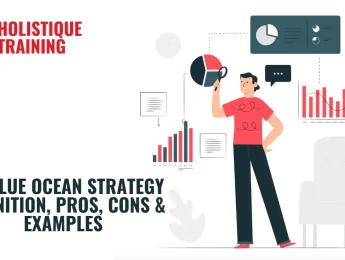- Table of Contents
- Introduction
- What Are Treasury Management Products?
- Cash Management Solutions
- Foreign Exchange (FX) Risk Hedging Instruments
- Interest Rate Risk Management Products
- Trade Finance Solutions
- Liquidity Management Tools
- How Do Treasury Products and Risk Management Complement Each Other?
- Risk Identification and Mitigation
- Enhancing Liquidity and Cash Flow
- Hedging Market Risks
- Credit Risk Management
- Regulatory Compliance
- Decision Support
- Cost-Effective Solutions
- Adaptability and Innovation
- Why Is Treasury Risk Management Important?
- Safeguarding Financial Assets
- Ensuring Financial Stability
- Preserving Shareholder Value
- Informed Decision-Making
- Competitive Advantage
- Regulatory Compliance
- Crisis Resilience
- Cost Optimisation
- Business Continuity
- Reputation and Brand Protection
- Treasury Risk Management Process
- 1- Risk Identification
- 2- Risk Measurement and Assessment
- 3- Risk Mitigation Strategies
- 4- Implementation
- 5- Reporting and Monitoring
- Treasury Risk Management Challenges
- Complexity of Financial Markets
- Volatile Interest Rates and Exchange Rates
- Liquidity Risk
- Credit Risk and Counterparty Risk
- Regulatory Compliance
- Integration of Technology
- Data Management and Analysis
- Communication and Collaboration
- Balancing Short-Term and Long-Term Objectives
- What the Statistics Say?
- Conclusion
Introduction
In the intricate world of finance, where uncertainties loom large, the art of treasury risk management stands as a formidable shield, safeguarding businesses from potential financial storms. Nestled within the core of every successful organisation, the treasury department operates like a vigilant guardian, orchestrating a symphony of financial instruments known as treasury management products. Together, they form an intricate dance that protects a company's liquidity, optimises cash flow, and shields against market perils. In this blog post, we embark on a journey to uncover the enigmatic realm of treasury risk management and the diverse range of products that empower financial resilience in a dynamic and ever-evolving landscape.
What Are Treasury Management Products?
Treasury management products refer to a suite of financial instruments and tools designed to optimise a company's cash flow, mitigate risks, and enhance operational efficiency. These products offer a wide range of solutions tailored to meet various treasury needs. Some of the commonly used treasury management products include:
Cash Management Solutions
Cash management products are essential for optimising a company's financial operations. Cash pooling, for example, allows businesses to consolidate their cash resources, reducing idle balances and maximising interest income.Automated clearing house(ACH) transactions and electronic funds transfers (EFTs) streamline the movement of funds, improving operational efficiency.
Foreign Exchange (FX) Risk Hedging Instruments
For companies engaged in international business, foreign exchange risk can be a significant concern. Utilising products like forward contracts, currency swaps, and options enables businesses to protect themselves from adverse currency exchange rate movements. These tools provide stability in cross-border transactions and safeguard against financial losses due to currency fluctuations.
Interest Rate Risk Management Products
Interest rate fluctuations can impact a company's cost of borrowing and investment returns. Interest rate swaps, caps, and floors are vital tools for managing interest rate risk. They allow businesses to either fix or limit their exposure to changing interest rates, ensuring predictability in financial planning.
Trade Finance Solutions
International trade transactions often involve complex logistics and financial risks. Trade finance products like letters of credit, bank guarantees, and documentary collections help facilitate these transactions and mitigate risks associated with cross-border commerce. These solutions provide a level of assurance for both buyers and sellers in global trade.
Liquidity Management Tools
Maintaining optimal liquidity is crucial for a company's financial health. Treasury departments use tools like money market funds and short-term investments to ensure that their cash is working efficiently. By placing idle cash into these instruments, businesses can enhance returns while still having access to funds when needed, improving overall financial performance.
Table 1: Treasury management products
Treasury Management Product | Description |
Cash Management Solutions | Streamline fund movements, maximize returns, minimize costs. |
Foreign Exchange (FX) Hedging | Mitigate currency risks in global transactions. |
Interest Rate Risk Management | Stabilize costs, optimize investments with hedging tools. |
Trade Finance Solutions | Secure international transactions, reduce financial risks. |
Liquidity Management Tools | Maintain optimal cash flow, enhance returns on idle funds. |
How Do Treasury Products and Risk Management Complement Each Other?
Treasury risk management is the process of identifying, assessing, and mitigating financial risks that may impact a company's treasury operations and financial well-being. The primary goal is to protect the company's assets, ensure liquidity, and preserve shareholder value. Treasury risk can arise from various sources, including market risks (e.g., interest rate and FX risks), credit risks, liquidity risks, operational risks, and legal and regulatory risks.
Treasury products and risk management form an inseparable duo, working in tandem to fortify a company's financial fortress. While treasury products provide the necessary tools and instruments to optimise cash flow and manage financial transactions, risk management ensures these activities are conducted with prudence and foresight. Let's explore how these two pillars of financial management complement each other:
Risk Identification and Mitigation
Treasury products offer a diverse array of financial instruments that cater to specific treasury needs. As risk managers identify potential risks, they leverage these products to implement effective risk mitigation strategies. For instance, in the face of foreign exchange (FX) risk, risk managers may deploy currency swaps or options to hedge against exchange rate fluctuations, ensuring stability in cross-border transactions.
Enhancing Liquidity and Cash Flow
Treasury products like cash pooling and money market funds are designed to optimise liquidity and enhance cash flow management. However, before utilising these products, risk managers assess liquidity risks and determine the most suitable instruments to maintain adequate reserves while maximising returns on excess cash.
Hedging Market Risks
Market risks, such as interest rate fluctuations and commodity price volatility, can significantly impact a company's financial performance. Treasury products like interest rate swaps and commodity futures play a crucial role in hedging such risks. Risk managers assess the exposure to these market fluctuations and strategically deploy appropriate treasury products to lock in favourable rates or limit potential losses.
Credit Risk Management
Treasury products that involve trade finance, such as letters of credit and bank guarantees, are essential for facilitating international trade transactions. However, risk managers closely analyse the creditworthiness of parties involved and tailor these products to mitigate credit risks effectively.
Regulatory Compliance
Treasury products, such as derivatives and structured financial products, often come under regulatory scrutiny. Risk managers ensure that the usage of these products aligns with relevant regulatory guidelines, preventing potential legal and reputational risks.
Decision Support
The collaboration between treasury products and risk management extends to aiding decision-making processes. Risk managers provide valuable insights into the potential risks associated with financial strategies, allowing treasury teams to make well-informed decisions when employing specific products.
Cost-Effective Solutions
By integrating risk management principles into the selection and deployment of treasury products, companies can optimise costs. Risk managers evaluate thecost-benefit ratio of various products, ensuring that the chosen solutions align with the company's risk appetite and financial goals.
Adaptability and Innovation
As financial markets evolve, new treasury products emerge to meet changing needs. Risk managers stay abreast of market trends, assessing the viability and risk implications of innovative products. Their guidance allows treasurers to adopt novel solutions while managing associated risks effectively.
Why Is Treasury Risk Management Important?
In the dynamic landscape of global financial markets, the significance of treasury risk management cannot be overstated. It serves as the bedrock upon which a company's financial stability and long-term success rest. Let's delve deeper into why treasury risk management holds a pivotal role in shaping the fate of businesses:
Safeguarding Financial Assets
Treasury risk management involves constant vigilance and analysis. By employing sophisticated tools and methodologies, companies can not only identify risks but also implement strategies to mitigate them. For instance, during periods of market volatility, risk managers can adjust investment portfolios to minimise losses. Similarly, in anticipation of a liquidity crisis, they can secure lines of credit or optimise cash reserves. These proactive measures serve as a buffer, protecting a company's financial assets from erosion.
Ensuring Financial Stability
A stable financial position is not just a matter of present confidence but a prerequisite for future growth. Investors and creditors assess a company's risk management practices to gauge its ability to weather uncertainties. Robust risk management practices, such as diversifying investments, stress-testing financial strategies, and maintaining adequate insurance coverage, instil confidence. This stability not only attracts investments but also allows the company to plan for the long term, fostering sustainable growth.
Preserving Shareholder Value
Shareholders invest in a company with the expectation of returns and growth. By effectively managing risks, companies can protect shareholder value. For instance, in a volatile market, hedging strategies can safeguard investments. Moreover, transparent communication about risk management strategies builds trust, reassuring shareholders about the company's commitment to protecting their interests. Preserving shareholder value is not just about financial gains; it's about maintaining the faith and trust of the investors, which is integral to a company's reputation.
Informed Decision-Making
Risk managers, armed with data-driven insights, play a pivotal role in decision-making processes. By quantifying risks and evaluating potential impacts, they provide executives with a clear understanding of the risks associated with various strategic options. Thisinformed decision-making is critical in mergers and acquisitions, capital investments, and expansion plans. It helps companies align their goals with their risk tolerance, ensuring that their strategic decisions are not only visionary but also pragmatic and well-informed.
Competitive Advantage
In a global market where uncertainties are inevitable, companies that can effectively navigate risks gain a significant advantage. By embracing innovative risk management practices, businesses can respond swiftly to market shifts, enabling them to seize opportunities that competitors might miss. This agility is a competitive differentiator, allowing companies not only to survive market fluctuations but also to emerge stronger and more resilient, consolidating their market presence.
Regulatory Compliance
Financial regulations are becoming increasingly stringent globally. Compliance failures can lead to hefty fines and reputational damage. Treasury risk management ensures that a company's financial operations adhere to these regulations. By keeping abreast of evolving compliance requirements and integrating them into their risk management frameworks, companies mitigate legal risks and ensure their operations are not disrupted by regulatory issues.
Crisis Resilience
The ability to navigate crises, be they economic downturns, natural disasters, or pandemics, is a testament to a company's resilience. Effective risk management involves scenario planning, allowing companies to anticipate potential challenges and formulate response strategies. During crises, companies with robust risk management plans can pivot swiftly, ensuring that critical operations continue and losses are minimised. This resilience not only safeguards the company's financial health but also maintains confidence among stakeholders, reinforcing the company's reputation.
Cost Optimisation
Prudent risk management involves evaluating the costs and benefits of various risk mitigation strategies. For instance, companies can use derivatives to hedge against currency fluctuations, optimising their financial resources. By avoiding unnecessary hedging costs and aligning risk mitigation strategies with actual exposure, companies ensure that they are not overcommitting financial resources while still adequately protecting themselves.
Business Continuity
Risk management is integral to business continuity planning. By identifying potential risks, companies can develop comprehensive contingency plans. These plans encompass not only financial aspects but also operational and logistical considerations. Effective risk management ensures that even during disruptions, essential services continue, supply chains remain intact, and customer commitments are honoured. This continuity is vital for maintaining customer trust and sustaining revenue streams, even during challenging times.
Reputation and Brand Protection
A company's reputation is one of its most valuable assets. Financial scandals or mismanagement can irreparably damage a company's brand. Proactive risk management measures not only prevent financial crises but also demonstrate the company's commitment to ethical practices and responsible financial stewardship. This commitment is visible to customers, investors, and partners, fostering trust and loyalty. A positive reputation enhances a company's brand value, making it more resilient in the face of negative publicity or market fluctuations.
Treasury Risk Management Process
An effective treasury risk management process consists of several key steps:
1- Risk Identification
The initial phase of the treasury risk management process involves a comprehensive evaluation of potential risks. This includes not only the more obvious market, credit, liquidity, operational, and legal/regulatory risks but also emerging risks specific to the industry or global economic trends. Through detailed analysis and scenario planning, the company gains a nuanced understanding of the multifaceted risks that could impact its treasury operations.
2- Risk Measurement and Assessment
Once risks are identified, they must be quantified and assessed for their potential impact. Skilled risk analysts use sophisticated modelling techniques to estimate the financial consequences of various risk scenarios. Simultaneously, they assess the likelihood of these scenarios occurring. This dual evaluation—impact and probability—provides a clear picture of the risks' significance, allowing the company to prioritise them effectively.
3- Risk Mitigation Strategies
Based on the insights gained from risk assessment, the risk manager formulates appropriate risk mitigation strategies. These strategies are tailored to the specific nature and intensity of each identified risk. For instance, in the face of volatile currency exchange rates, the company might opt for currency hedging instruments like options or forward contracts. Alternatively, in the case of credit risks associated with trading partners, the company might employ credit insurance or letters of credit. These strategies aim to either reduce the likelihood of the risk occurring or minimise its impact on the company’s financials.
4- Implementation
Once the risk mitigation strategies are established, they are put into action. The treasury team oversees the implementation process, ensuring that the strategies are integrated into the company's day-to-day operations. This phase demands a careful balance between proactive decision-making and adaptability. As market conditions evolve, the strategies might need adjustments to remain effective. Hence, constant vigilance and flexibility are key aspects of this stage.
5- Reporting and Monitoring
Regular and transparent reporting is vital for keeping all stakeholders well-informed about the status of various risks and the efficacy of the implemented risk management strategies. These reports provide insights into the performance of the strategies, enabling the company to make data-driven decisions. Continuous monitoring is essential to ensure that the company stays aligned with its risk management objectives. By tracking the effectiveness of the strategies and comparing them against predefined benchmarks, the company can identify areas of improvement and make timely adjustments to its risk management approach. Regular reporting also facilitates clear communication with shareholders, investors, and regulatory authorities, demonstrating the company's commitment to managing its risks responsibly and transparently.
Treasury Risk Management Challenges
While treasury risk management is undoubtedly essential for financial stability, it comes with its fair share of challenges. Navigating these obstacles is crucial for effectively implementing risk management strategies. Let's explore some of the common challenges faced by treasury professionals:
Complexity of Financial Markets
Global financial markets are intricate and highly interconnected, making it challenging to predict and manage risks effectively. Treasury professionals must stay updated with the latest market trends and continuously adapt their risk management approach to address evolving complexities.
Volatile Interest Rates and Exchange Rates
Fluctuating interest rates and exchange rates can expose businesses to significant risks. Managing interest rate risk becomes intricate when dealing with a combination of fixed and floating-rate debt or investments. Likewise, currency volatility can impact profitability for companies engaged in international trade.
Liquidity Risk
Maintaining sufficient liquidity is crucial for meeting short-term financial obligations. However, managing liquidity risk becomes daunting during periods of economic uncertainty, making it essential for treasurers to strike the right balance between maximising returns and ensuring adequate cash reserves.
Credit Risk and Counterparty Risk
Engaging in financial transactions with multiple counterparties exposes companies to credit risk. Assessing the creditworthiness of counterparties and mitigating potential default risks demand rigorous due diligence and risk assessment processes.
Regulatory Compliance
Stringent financial regulations require treasurers to comply with various reporting standards and risk management guidelines. Keeping up with the ever-changing regulatory landscape and ensuring adherence to compliance requirements can be challenging for treasury teams.
Integration of Technology
The growing importance of technology in treasury operations presents both opportunities and challenges. While advanced systems and automation can streamline processes, treasury professionals must also guard against cybersecurity risks and data breaches.
Data Management and Analysis
Effective risk management relies on accurate and timely data analysis. Ensuring data integrity, managing vast volumes of financial information, and deriving meaningful insights from data can pose significant challenges.
Communication and Collaboration
Treasury risk management involves multiple stakeholders, including treasury teams, risk managers, finance departments, and senior management. Effective communication and collaboration among these groups are crucial to ensure a cohesive risk management strategy.
Balancing Short-Term and Long-Term Objectives
Treasurers often face the dilemma of balancing short-term financial goals with long-term strategic objectives. Striking the right balance is essential to maintain financial stability while fostering sustainable growth.
What the Statistics Say?
According toThe Global Treasurer, treasurers grapple with a range of challenges in treasury risk management, notably credit risk, affecting both commercial and bank counterparties by 56% and 54% respectively, as well as market risk by 65% and liquidity risk by 49%. These findings highlight the ongoing and persistent challenges that treasurers face in managing treasury risk effectively.
Conclusion
In conclusion, treasury risk management and products play a vital role in safeguarding a company's financial interests and ensuring its long-term success. With an ever-changing financial landscape, the need for effective risk management has become more critical than ever. By employing a comprehensive treasury risk management process and utilising various treasury management products, businesses can navigate through uncertainties and maintain financial stability. Embracing a proactive approach to treasury risk management will not only shield a company from potential pitfalls but also provide a competitive advantage in the dynamic global market.
At Holistique Training, we understand the critical importance of treasury risk management in safeguarding your organisation's financial interests. That's why we offer a specialised course on Treasury Risk Management & Products, designed to empower financial professionals with the knowledge and skills needed to excel in this crucial domain. Through our course, you will gain valuable insights into risk identification, risk mitigation strategies, and the optimal utilisation of treasury products for your specific business needs.
Don't let financial uncertainties hold you back. Join our Treasury Risk Management & Products course today and unlock the tools to fortify your company's financial resilience and drive sustainable success in an ever-evolving financial landscape. Enrol now and take charge of your financial future!























